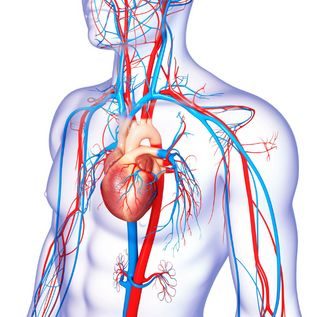
13 Body Systems And Their Function
In this blog, we will talk more about body systems and their function.
What are body systems?
Body systems are groups of organs and tissues that collaborate together to carry out crucial tasks for the body.
The human body is made up of 30 trillion cells and all of our DNA is present in each and every one of them. These cells come together to form 14 different tissues. These tissues in turn, allow the development of more than 80 different organs in our body.
Whilst some organs function independently, others are more complicated and have multiple roles such as the gut, liver, kidneys and adrenals. In fact, these organs are involved directly with multiple body systems.
A system is created through the joining of organs that, although being very different, work together to provide a biological function. So for instance, without other organs that help the lungs get air, for instance, having lungs would be pointless. The body systems enable us to be alive, allow us to perform our physical and mental tasks and are vital to our health.
How many systems in the human body?
There are 13 body systems in total that make up the human body. Below is a description of each body system and their function.
Body systems and their function
The Respiratory System
Organs that work together to exchange carbon dioxide for oxygen in the blood and eliminate it from the body give birth to the respiratory system. By moving more than 8,000 litres of air each day, this system enables us to breathe around 21,000 times every day.
We therefore experience almost 600 million inhalations and exhalations throughout our lives, and more than 240 million litres of air are circulated via this system. As the primary organs of the system and the location of gas exchange, they are the nose, mouth, pharynx, larynx, trachea, and lungs.
The Circulatory System
All the elements required to keep the body alive can be transported through the blood thanks to the circulatory system. All the organs that enable blood flow, circulation of oxygen, nutrients, hormones, and carbon dioxide come together to form the circulatory or cardiovascular system. Everything moves because of the blood.
The heart, which is located in the centre of the body and is an amazing organ capable of pumping 7,000 litres of blood per day, would have pumped more than 200 million litres of blood over the course of a lifetime because it had beat more than 3 billion times, which is enough to fill 62 Olympic swimming pools.
Along with the heart, the cardiovascular system is composed of blood vessels (arteries, veins, and capillaries), which act as conduits for the blood, the primary tissue (even though it is liquid) in this system.
The Nervous System
The group of tissues and organs known as the nervous system is responsible for the generation and transmission of information inside the body. Since all other systems in the human body are controlled by our central processing unit (the brain) , through the generation and transmission of electrical impulses, it is conceivably the most complicated system in the body.
The most important component of this system are the neurones, which form a highway in which billions of them communicate information about environmental circumstances (thanks to the senses) and also convey commands to other systems so that we can breathe, make our heart beat, run, read, etc.
The nervous system is made up of the brain, cerebellum, brainstem, and spinal cord, and the peripheral nervous system and is what regulates everything (cranial nerves and peripheral nerves).
The Immune System
The immune system’s job is to identify and eliminate all substances present in the body that may endanger it. The immune system works as our body’s built-in defence against diseases because it produces an immunological response that kills germs before they can do any damage.
It is primarily made up of specialised immune cells, each of which is in the process of recognising or neutralising pathogens (B lymphocytes, T lymphocytes, Natural Killer cells, macrophages, etc.). It is also made up of blood, lymph, bone marrow, thymus, spleen, and lymph nodes.
The Digestive system
All the organs that are responsible for food digestion and nutrient absorption come together to form the digestive system. In this respect, it is composed of elements that break down complex food molecules into less complex ones, which are then absorbed into the bloodstream and fuel our cells.
The organs involved in swallowing, digesting, and nutrition absorption collectively make up the digestive system in this sense. This is why we have the mouth, tongue, salivary glands, pharynx, oesophagus, stomach, liver, pancreas, small intestine, and big intestine. As participants in faeces, the rectum and anus are also parts of this system.
6.The Bone System
The structures that make up the skeletal system, also known as the skeleton, are responsible for the body’s defence, integrity, mobility, support of the muscles, protection of internal organs, storage of fatty acids, production of blood cells, and storage of calcium and phosphorus, the two minerals found in the body in the highest concentrations.
In essence, we are discussing the bones. The human skeletal system, a living, dynamic structure that is crucial for our physical health, is made up of 206 bones in total.
The Urinary System
The organs that produce, store, or expel urine—a liquid that is produced following the process of filtering and cleansing the blood—come together to form the excretory or urinary system. In this sense, urine is a collection of all the poisons that must leave the bloodstream but cannot be removed in any other way.
The two kidneys (which filter the blood and generate urine), the ureter (which carries urine from the kidneys), the bladder (which stores urine until it is time to urinate), and the urethra (tube through which urine is expelled) make up the urinary system.
The Reproductive System
The group of organs known as the reproductive system are involved in sexual pleasure, sex hormone synthesis, reproduction, and fertility. Although there are significant distinctions between the sexes, both internal and exterior organs are always present.
The uterus and womb are the internal organs of women, while the vulva, which also contains the clitoris and the labia majora and minora, is their exterior organ. In the case of men, the external genitalia are the penis and scrotum, while the internal genitalia are the testicles, the epididymis (a tube that connects the testicles with the vas deferens), the ejaculatory duct, and the prostate.
The Muscular System
More than 650 muscles make up the human body, and these muscles combine to form the muscular system. Muscles are the structures that, through contractions and relaxations regulated by the nervous system, enable mobility as well as the maintenance of essential activities involving muscular movements.
Ninety percent of the time we consciously regulate our own contractions because 90% of the body’s muscles are within our voluntary control. The remaining 10% which is involuntary, control some muscles like those in the heart and lungs, which need to be in motion all the time.
The Endocrine System
The organs involved in the production and release of hormones, which are chemicals that travel through our blood to control and coordinate the physiology of every other organ, form the endocrine system.
These hormones and the endocrine glands together make up the endocrine system. Each endocrine gland (thyroid, hypothalamus, pancreas, testicles, ovaries, etc.) is specialised in the synthesis and release of specific hormones; however, taken collectively, they allow for mood regulation, digestion assistance, blood sugar control, support breathing, stable blood circulation, stimulation of body growth, stimulation of sexual function, and regulation of body temperature.
The Lymphatic System
The manufacture and transportation of lymph, a colourless fluid rich in lipids and crucial to the immune response, are carried out by the lymphatic system, which is created by the union of specialised organs. The lymph circulates through lymphatic tubes, and is mostly made up of white blood cells, which make up the immune system.
Therefore, the basic lymphoid organs, which work out to be over 600 and produce white blood cells when an infection is present, lymphatic veins, lymph nodes (which are located in places like the armpits and neck), and lymph are all components of the lymphatic system (bone marrow and thymus, where white blood cells mature).
The Integumentary System
The organs and systems that serve to protect us from the outside world and keep our body temperature mechanically steady come together to form the integumentary system. In actuality, we are discussing the skin, nails, and hair.
The skin is by far the biggest organ in the human body, measuring two square metres and weighing more than five kilograms. The skin, along with nails and hair, serves as the body’s first line of defence against pathogen invasion. It also enables the development of the sense of touch, carries identity values (the way we are perceived depends on how our skin looks), controls metabolic processes, and regulates body temperature.
The Sensory System
The sensory system results from the union of all the sensory organs, or the parts of our body that can detect touch, visual, smell taste, or aural inputs and converts them into nerve information that can be transmitted to the brain where it can be interpreted and translated into a sensation.
The physical parts that enable the development of the senses, such as the skin (for touch), tongue (for taste), nose (for smell), eyes (for sight), and ears, make up the sensory system. Different neurons in these organs collect environmental cues and convert them into messages that our central nervous system can understand.
How we incorporate body systems and their function in to our root cause analysis
At Wholistic Natural Health our practitioners place more emphasis on treating the systems of the body rather than just treating just symptoms alone. All bodily organs are interconnected and have an impact on one another. One symptom might affect several bodily systems, and so if you don’t treat all of the body systems involved, the root cause will just keep on coming back because the problem is not being fully fixed. That is why it is so important to treat the illness’s underlying causes.
In our free root cause analysis health assessment, we can begin to understand what’s going on with your body, learn more about your past medical history and identify which body systems are out of balance, which in turn helps us to find out the root cause of your health concerns. We can then provide helpful free info on enhancing your personal health situation.
We hope you found this information on the Body Systems And Their Function blog helpful. We would love to hear your thoughts on what you think. Let us know in the comments.



